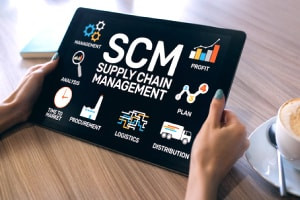This free online course introduces you to the modelling and analytics in Supply Chain Management. Firstly, the course provides insights into transportation as well as warehousing modelling and analytics. This is arranged systematically and presented clearly so you will easily be able to understand the given concepts. The course gives emphasis to topics such as strategic performance improvement, inventory analytics and modelling coordination in Supply Chains.
Next, the performance of the entire Supply Chain and the analysis of Data Envelopment, as well as the various concepts involved in Inventory Management are analyzed. The course then goes on to explain the safety stock and reorder level, along with the continuous and periodic review systems. Information distortions, Six Sigma and Queuing in Coordination are discussed. This process comes under the modelling coordination in Supply Chains.
Finally, the course places emphasis on risk analytics in a Supply Network along with design and modelling of the Global Supply Chain. The advantages of tax, transhipment and flexibility; and total costs are mentioned, which helps in designing the global supply chain. Upon completion of this course, you will learn how to develop supply chain strategies and logistical capabilities that serve the needs of their customers whilst maximizing overall profitability. The Modelling and Analytics for Supply Chain Management is an advanced and informative course which will interest students and those in management, industrial and systems engineering, mechanical engineering, and related disciplines or those who have an interest in these topics. Sign up for this course and start learning today!
What You Will Learn In This Free Course
View All Learning Outcomes View Less All Alison courses are free to enrol, study, and complete. To successfully complete this Diploma course and become an Alison Graduate, you need to achieve 80% or higher in each course assessment.
Once you have completed this Diploma course, you have the option to acquire an official Diploma, which is a great way to share your achievement with the world.
Your Alison certificate is:
- Ideal for sharing with potential employers.
- Great for your CV, professional social media profiles, and job applications.
- An indication of your commitment to continuously learn, upskill, and achieve high results.
- An incentive for you to continue empowering yourself through lifelong learning.
Alison offers 2 types of Diploma for completed Diploma courses:
- Digital Diploma: a downloadable Diploma in PDF format immediately available to you when you complete your purchase.
- Physical Diploma: a physical version of your officially branded and security-marked Diploma
All Diplomas are available to purchase through the Alison Shop. For more information on purchasing Alison Diploma, please visit our FAQs. If you decide not to purchase your Alison Diploma, you can still demonstrate your achievement by sharing your Learner Record or Learner Achievement Verification, both of which are accessible from your Account Settings.











 Avg. Hours
Avg. Hours  Contains Video
Contains Video  CPD Accredited
CPD Accredited 
 Total XP:
Total XP: 
 Knowledge & Skills You Will Learn
Knowledge & Skills You Will Learn 






